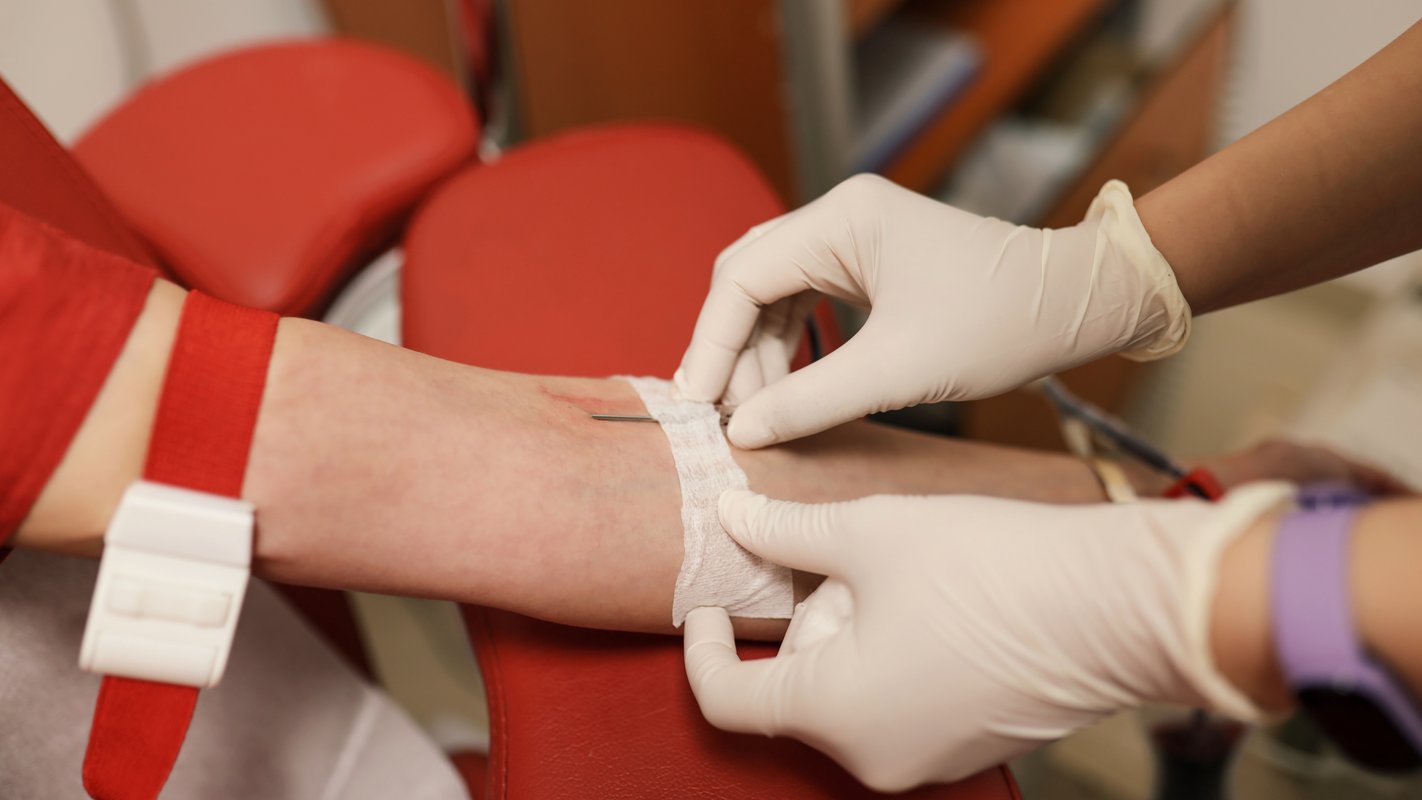What is Phlebotomy?
Phlebotomy is the practice of drawing blood from patients for medical testing, transfusion, or research purposes. Phlebotomists are responsible for collecting blood samples, properly labeling them, and ensuring the safety and comfort of patients during the process.
Where does a Phlebotomist work?
Phlebotomists play a crucial role in various healthcare settings, ensuring that blood collection is handled with expertise and care. Here’s where you might find them working:
-
Hospitals: Phlebotomists collect blood samples for diagnostic tests and ensure proper processing and transport to labs for analysis.
-
Doctor’s Offices: In physician’s offices, they perform blood draws for routine tests and assist with other clinical tasks.
-
Blood Banks: At blood banks, phlebotomists collect blood donations, manage the donation process, and ensure donor safety.
-
Diagnostic Laboratories: Phlebotomists in laboratories focus on drawing blood and handling samples for various medical tests.
-
Mobile Units: They also work in mobile units, providing blood collection services at schools, businesses, and community events.
The demand for phlebotomists is on the rise, with an 8% projected growth from 2023 to 2033, making this a promising career with expanding opportunities.
How to Become a Phlebotomist in Oklahoma? What are the requirements to become a Phlebotomist in Oklahoma?
Ready to take the leap and become a phlebotomist in Oklahoma? Here's a simple, step-by-step guide to get you started:
1. Join an accredited phlebotomy training program: The first step in your journey is to enroll in a phlebotomy training program. With 40-80 classroom hours and 20-40 hands-on clinical hours, you'll gain the knowledge and skills you need to excel. Before you enroll, though, make sure to:
- Verify the school is state-approved
- Check the required training hours
- Clarify where you'll do your clinical hours
- Ask what your tuition covers (books, uniforms, exams, etc.)
- Ask which certification exam agency the school prefers
2. Fulfill basic requirements: To join a phlebotomy training program, you'll need a high school diploma or GED, a clean background check, and up-to-date immunization records. You'll also need to be at least 18 years old and pass a physical and health exam. Most Oklahoma phlebotomy schools follow these guidelines, but they can change, so always check with your chosen school for the most current requirements!
3. Ace the certification exam: After completing your training, you'll earn a Certificate of Completion. But don't confuse this with being “Certified”. This certificate shows that you've finished your training, and it's your ticket to register for the national certification exam. This is key, especially if you're new to the field and lack prior experience. If you're ready to take it to the next level, getting your national certification exam is done through the agencies that will be discussed later on.
Once you're certified, you're ready to hit the job market and kickstart your healthcare career as a phlebotomist!
Where can I find Phlebotomy classes in Oklahoma?
Dreambound, the largest platform for students to find and compare vocational training programs, can help you find Phlebotomy classes in Oklahoma. Dreambound offers a wide range of Phlebotomy training programs from accredited institutions across the state. Find phlebotomy classes near you by simply applying filters on our platform so you can easily view classes within your interest! You can also consult Skipper to match you to the right program!
How do I get my Phlebotomy certification in Oklahoma?
After completing your Phlebotomy training program, you will need to pass a national certification exam to obtain your Phlebotomy certification. The most common certifications are the Certified Phlebotomy Technician (CPT) and the Registered Phlebotomy Technician (RPT).
If you want to be a certified phlebotomist, you will take the certification exam with an agency. The American Society of Phlebotomy Technicians (ASPT) is one of the most prominent certifying agencies for phlebotomists. As of June 2024, you can take the phlebotomy technician exam for just $65. To become a member of ASPT and enjoy perks, an extra $35 would be charged. If you prefer to take your exam from the comfort of your home they have a fee of $135.
Another certifying agency is the National Center for Competency Testing (NCCT). Here, you'll earn the prestigious title of National Certified Phlebotomy Technician (NCPT). You can apply online and take the exam for $119. The test consists of 125 questions, and you'll have 3 hours to ace it.
Once you pass the exam, you're officially a certified phlebotomist! Your name will be listed on the registry, and you can verify your credentials through the agency where you took your exam. Other certification agencies include American Medical Technologist, American Certification Agency (ACA), National Healthcareer Association (NHA), National Phlebotomy Association (NPA), National Performance Specialists (NPS), and American Society for Clinical Pathology (ASCP).
How do I get a job as a Phlebotomist?
Once you have your Phlebotomy certification, you can start applying for Phlebotomist positions at hospitals, clinics, laboratories, and other healthcare facilities. Many employers also prefer candidates with prior experience, so you may want to consider completing an internship or entry-level phlebotomy position to gain hands-on experience.
Keep your career on the fast track and your opportunities wide open. Generally, your phlebotomy certification is valid for 1-3 years. Renewing your certification is possible. Your certifying agency will instruct you to earn some extra educational credits for the renewal of your phlebotomy certification. Remember, the expiry dates, costs, and renewal rules can vary, so staying informed is key!
Career Paths and Opportunities after Becoming a Phlebotomist
With your Phlebotomy certification, you can pursue a variety of career paths, such as working as a Phlebotomist in a hospital or clinic, becoming a phlebotomy instructor, or even advancing into a supervisory or management role within the healthcare industry. If you are considering trying other healthcare roles alongside your phlebotomy license, here are in-demand careers that you should check out:
Frequently Asked Questions






